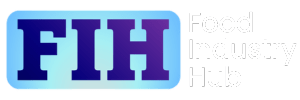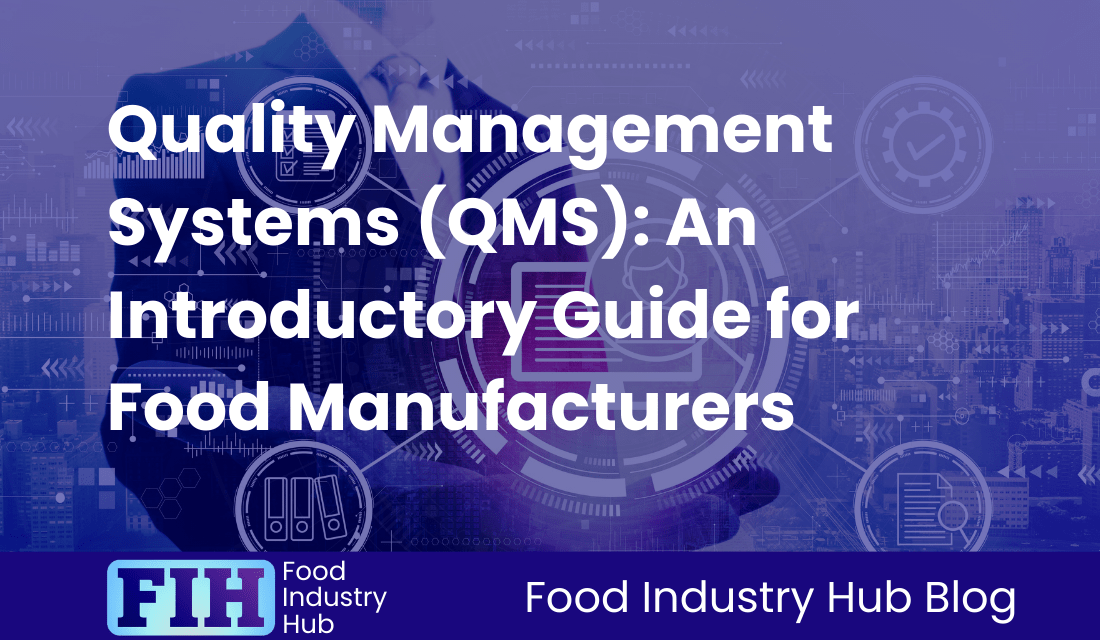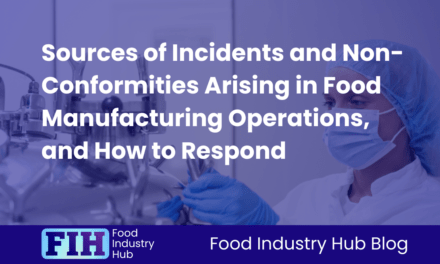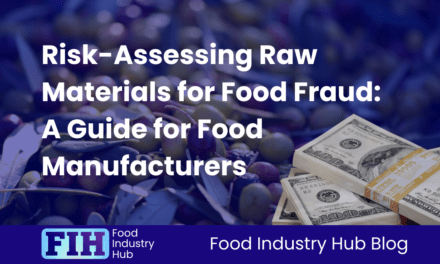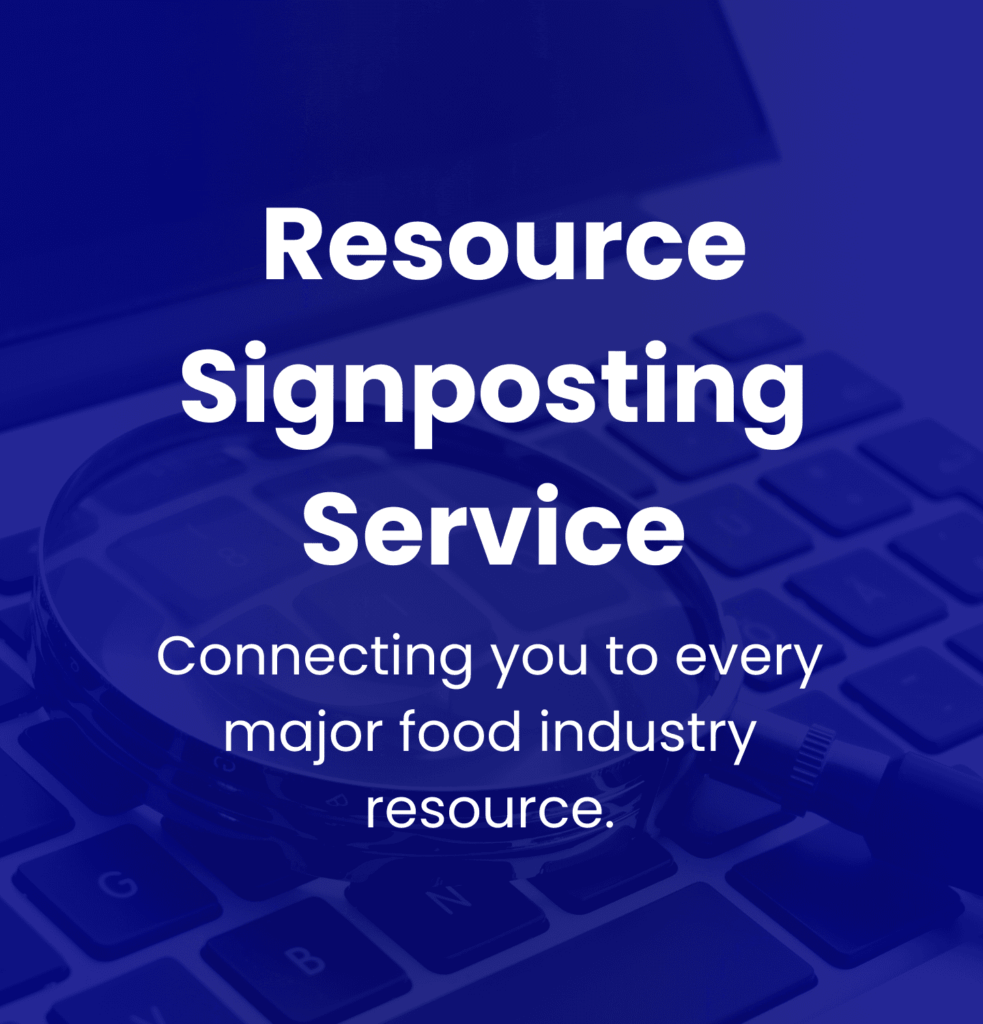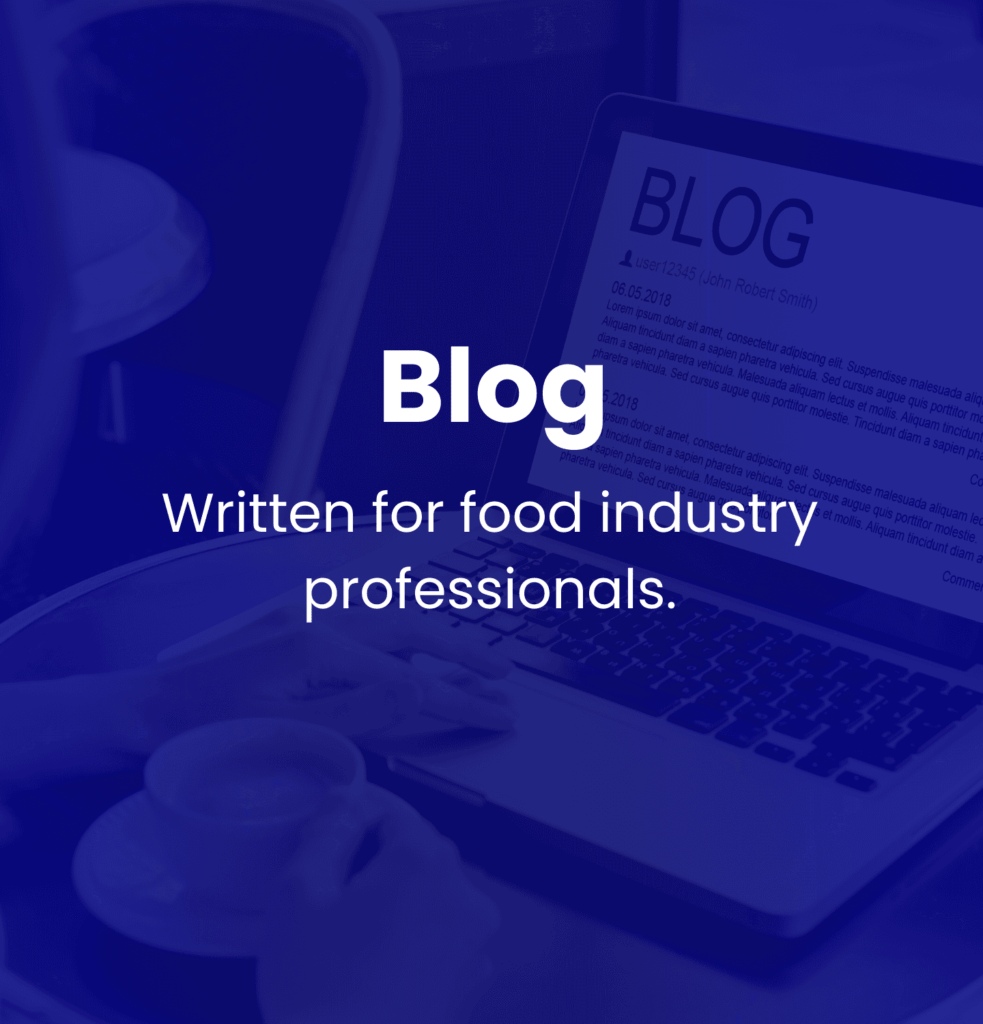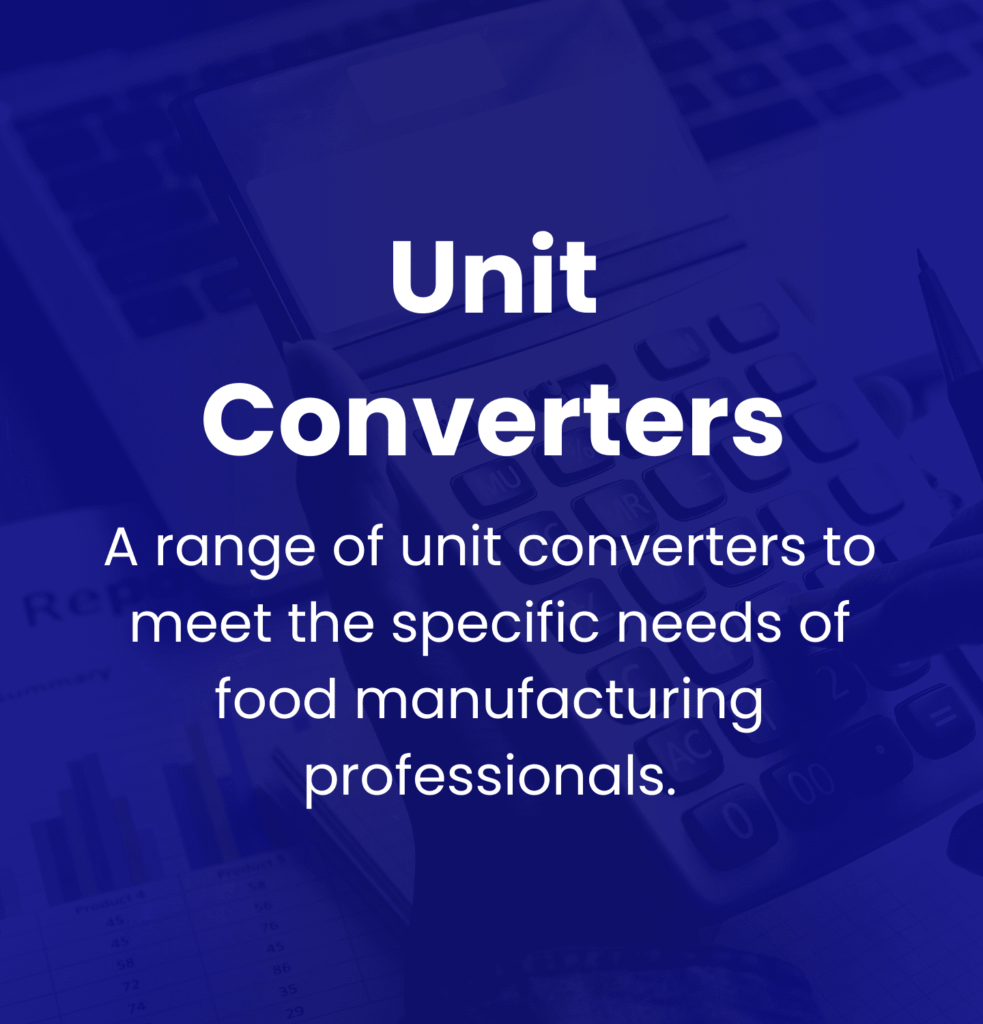Introduction
The quality management system (QMS) is an extensive management structure of key importance to food manufacturing, but is often regarded as being highly technical and inaccessible.
In this explanatory guide, we will explore the key components of the QMS and how they are applied in the context of food manufacturing.
This post is intended to provide a brief introduction to the different facets of the quality management system in a way that’s accessible, without being overly technical.
From senior management commitment to personnel training, each aspect plays a vital role in safeguarding the integrity of the food placed onto the market.
So, let’s delve into the world of quality management systems and discover how it can help protect both consumers and manufacturer.
As we dive into the topic, you’ll be interested to know that Food Industry Hub offers integrated management systems for food manufacturers, which you can use to strengthen your assurance processes.
Table of Contents
Key Takeaways
- The quality management system (QMS) is an extensive framework of controls and assurance processes designed to safeguard food safety, quality, authenticity, and legality.
- The quality management system can seem overwhelming at first, but it doesn’t need to be. The concepts are quite manageable.
- All members of the management team should make efforts to understand the composition of the quality management system and the role that hey play in upholding the objectives of the QMS.
Food Industry Hub Management Systems can significantly boost the effectiveness of your food safety and quality management system, leading to improved confidence and elevated quality assurance throughout your operations.
Senior management commitment
Commitment and buy-in from senior management determines the effectiveness of quality management systems in food manufacturing.
Senior management plays a crucial role in driving continual improvement and setting the tone for quality throughout the organisation.
The senior management is responsible for establishing the organisational structure, defining roles and responsibilities, and providing the necessary resources and management authority to ensure that quality objectives are met.
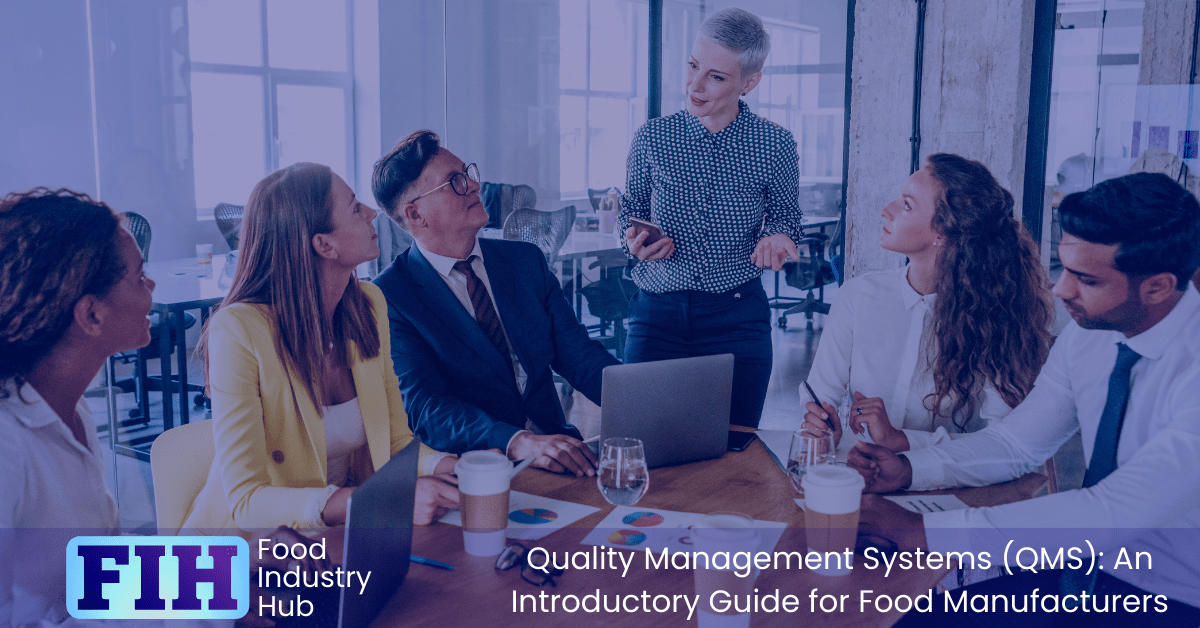
Senior management commitment and continual improvement
To ensure the success of a quality management system in food manufacturing, you must demonstrate a strong commitment to continual improvement.
As senior management, it’s your responsibility to lead by example and actively promote a culture of continuous improvement throughout the organisation.
This involves setting clear goals and objectives, regularly reviewing and analysing performance data, implementing corrective actions, and providing necessary resources and support.
There is also a strong emphasis on the development of the food safety and quality culture.
Organisational structure, responsibilities and management authority
Demonstrate your commitment to the effective implementation of the quality management system by establishing a clear organisational structure, defining responsibilities, and delegating management authority throughout your food manufacturing company. A well-defined structure ensures that everyone understands their roles and responsibilities, leading to improved communication, accountability, and efficiency.
The Food Safety Plan – HACCP
Now let’s talk about the key points of the Food Safety Plan – HACCP.
As part of the HACCP Food Safety Team, you’ll need to ensure that all prerequisite programmes are in place to establish a solid foundation for food safety.
This includes describing the product accurately and identifying its intended use, as well as constructing a process flow diagram to understand the critical control points.
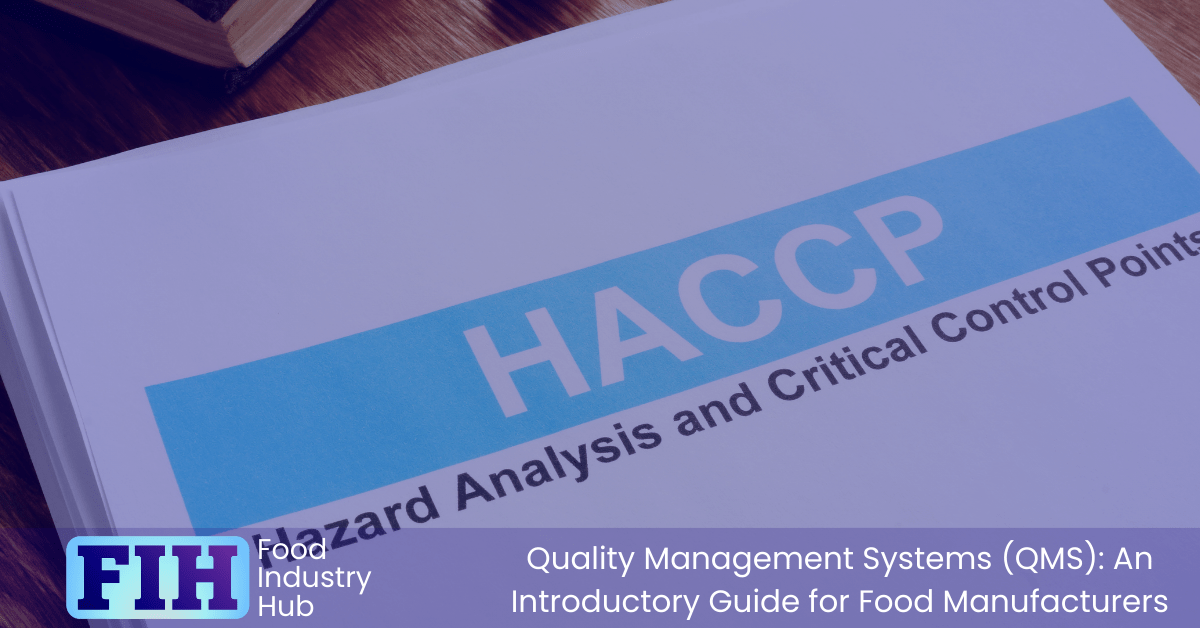
The HACCP Food Safety Team
Who is responsible for creating and implementing The HACCP Food Safety Team in a food manufacturing facility?
You, as the management, are responsible for establishing and implementing the HACCP Food Safety Team.
This team should consist of individuals who possess the necessary knowledge and expertise in food safety, and they’ll be responsible for developing and maintaining the HACCP plan.
It’s crucial to ensure that this team is trained and equipped to handle food safety hazards effectively. The HACCP team has to draw inputs from all functions – so special attention should be given to the composition of the team, which should represent all departments and competencies.
Prerequisite Programmes
Prerequisite programmes are essential programmes that must be in place before the implementation of the Hazard Analysis and Critical Control Points (HACCP) system. These programmes include Good Manufacturing Practices, sanitation, personnel hygiene, and supplier approval, among others.
They serve as the foundation for a successful HACCP plan.
Describing The Product
It’s crucial to accurately describe the product in the HACCP because this serves as a context for subsequent steps.
This includes providing detailed information about the ingredients, their sources, and any potential allergens.
Additionally, the description should cover the intended use of the product, storage requirements, and any specific handling instructions.
Accurate product description is essential for effective hazard analysis and control, allowing for the implementation of appropriate control measures to prevent food safety risks.
Identifying The Intended Use
Identifying the intended use of the product is a critical step in the food safety plan, ensuring that appropriate control measures are implemented to prevent food safety risks.
By understanding how the product will be consumed or used, you can ensure that any vulnerable consumer groups are properly safeguarded, and that any subsequent processing/cooking (or lack thereof) is accounted for.
This knowledge allows you to establish control points and preventive measures that specifically address these risks, safeguarding the quality and safety of the food throughout its intended use.
Constructing a Process Flow Diagram
The next step is to construct a process flow diagram, outlining the steps involved in the manufacturing process.
This diagram serves as a visual representation of the production process, indicating the sequence of steps, materials used, and critical control points.
It helps identify potential hazards, analyse risks, and develop effective control measures to ensure the safety and quality of the food product.
Verifying the Process Flow Diagram
You can verify a Process Flow Diagram by conducting a thorough review of the diagram’s accuracy and completeness. Examine each step in the process to ensure that it’s accurately represented in the diagram.
Check for any missing steps or incorrect sequencing. Compare the diagram to the actual production process to ensure that it reflects the reality of operational risks.
Listing All Potential Hazards
To ensure the safety of food manufacturing processes, it’s crucial to comprehensively list all potential hazards in the Food Safety Plan – HACCP.
This involves identifying any biological, chemical, allergenic, or physical hazards that could pose a risk to consumers.
By conducting a thorough assessment of potential hazards, you can establish effective control measures to prevent contamination and ensure the production of safe and high-quality food products.
Taking this proactive approach is essential for maintaining consumer trust and compliance with food safety regulations.
Determining Critical Control Points (CCPs)
After identifying all potential hazards in the Food Safety Plan – HACCP, the next step is to determine the critical control points (CCPs) for ensuring the safety of food manufacturing processes.
CCPs are specific points in the production process where control measures can be applied to prevent, eliminate, or reduce identified hazards to acceptable levels.
These points are critical because failure to control them could result in a failure to control a food safety hazard.
Identifying and managing CCPs is crucial to maintaining the integrity of the food manufacturing process.
Establishing Critical Limits
In establishing critical limits for the HACCP Plan, it’s essential to define specific parameters that must be met to ensure the safety of food manufacturing processes. These critical limits serve as boundaries or thresholds that indicate when a food manufacturing process is under control and when it’s not.
They’re established based on scientific evidence, regulatory requirements, and industry standards, and are crucial for preventing hazards and maintaining the quality and safety of food products.
Establishing a Monitoring System for Each CCP
You should establish a monitoring system for each Critical Control Point (CCP) in your Food Safety Plan – HACCP to ensure the safety and quality of your food manufacturing processes.
This system will help you track and record data related to the CCPs, allowing you to identify any deviations from the critical limits.
By consistently monitoring these CCPs, you can take immediate corrective actions and prevent any potential hazards from reaching the consumer.
Regular monitoring is essential for maintaining the integrity of your food production.
Establishing a Corrective Action Plan
To ensure the safety and quality of your food manufacturing processes, it’s crucial to establish a corrective action plan (The Food Safety Plan – HACCP) that allows you to promptly address any deviations from critical limits identified through the monitoring system for each Critical Control Point (CCP).
This plan should outline the steps to be taken when a deviation occurs, including identifying the root cause, implementing corrective actions, and verifying their effectiveness.
Validating The HACCP Plan and Establishing Verification Procedures
Validating The HACCP Plan and Establishing Verification Procedures is vital to ensuring the effectiveness and reliability of your food safety management system.
This involves conducting studies and experiments to confirm that the HACCP plan is capable of controlling identified hazards.
It also includes establishing verification procedures to regularly evaluate the effectiveness of your food safety system. Verification activities may include reviewing records, conducting audits, and testing samples.
HACCP Documentation and Record-Keeping
HACCP Documentation and Record-Keeping play a crucial role in demonstrating the integrity and effectiveness of your food safety plan. By documenting the critical control points, corrective actions, and monitoring procedures, you ensure that your food production processes are well-documented and can be easily audited.
Record-keeping allows you to track and analyse data, identify trends, and make informed decisions to improve your food safety practices. It also serves as evidence of your commitment to maintaining high standards and complying with regulatory requirements.
Sign-up for the Food Industry Hub Mail Service
We regularly produce new content for food industry professionals, and the Food Industry Hub Mail Service is the best way to stay up to date with the latest additions.
Signup today to be added to the Food Industry Hub mailing list.
The Food Safety and Quality Management System
Now let’s talk about the key points of the Food Safety and Quality Management System.
- In this system, you’ll find the Food Safety and Quality Manual, which serves as a guide for implementing and maintaining the necessary procedures.
- Document Version Control ensures that the most up-to-date information is being referenced and used.
- Record Completion and Maintenance ensures that all required records are properly documented and stored.
- Internal Audits are conducted to assess the effectiveness of the system.
- Supplier and Raw Material Approval and Performance Monitoring ensure that all ingredients meet the necessary quality and safety standards.
Software such as Food Industry Hub Management Systems can significantly boost the effectiveness of your food safety and quality management system, leading to improved confidence and elevated quality assurance throughout your operations.
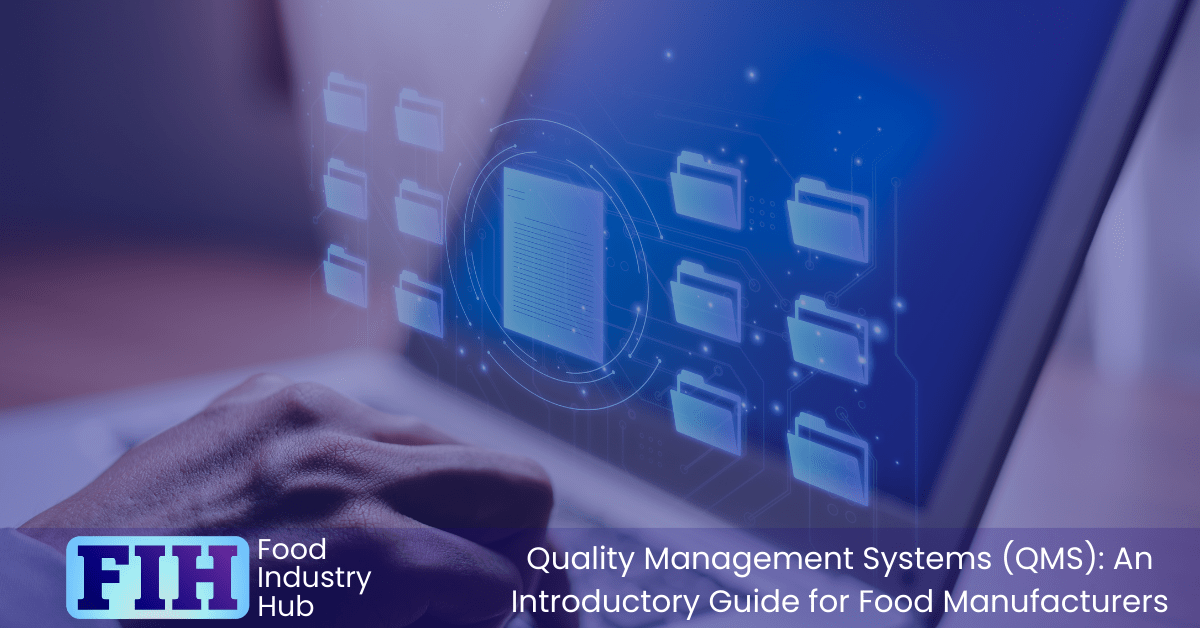
The Food Safety and Quality Manual
The food safety and quality manual serves as a comprehensive guide that outlines the policies and procedures necessary to ensure the safety and quality of food products.
It covers areas such as policies, procedures, work instructions, record sheets, hazard analysis, traceability, product labelling, and internal audit processes.
Document Version Control
To maintain effective control over document versions in the Food Safety and Quality Management System, it’s essential to establish a clear and systematic process. This process ensures that all document versions are up-to-date and accurately reflect the current practices and procedures.
Record Completion and Maintenance
Maintaining effective control over document versions in the Food Safety and Quality Management System seamlessly extends to the important task of record completion and maintenance. By ensuring that records are accurately completed and properly maintained, you can guarantee the traceability and integrity of your food production process.
This includes recording critical information such as ingredient specifications, production logs, and quality control checklists. Regularly reviewing and updating these records is crucial to maintaining compliance with food safety regulations and meeting customer expectations.
Internal Audits
To ensure the effectiveness of the Food Safety and Quality Management System, conducting regular internal audits is essential. These audits serve as a way to evaluate your processes, identify areas for improvement, and ensure compliance with your established procedures.
By reviewing documentation, observing operations, and interviewing employees, you can identify any deviations or non-conformances and take corrective actions promptly.
Internal audits are a proactive approach to maintaining the highest level of food safety and quality in your manufacturing processes.
Supplier and Raw Material Approval and Performance Monitoring
The approval and performance monitoring of suppliers and raw materials represents another crucial aspect of the Food Safety and Quality Management System
It’s essential to establish a robust process for approving suppliers based on their ability to meet your quality standards. This can take into account assurance processes operated by each supplier, evidenced by certification to a GSFI-recognised scheme.
Ongoing monitoring of supplier performance is necessary to ensure consistency and reliability in the quality of raw materials used in your food manufacturing process; as well as mitigating risks throughout your supply chain.
Specifications
Specifications make up another important component of the Food Safety and Quality Management System. Specifications outline the requirements for raw materials, ingredients, packaging materials, and finished products.
They include details such as physical characteristics, chemical criteria, microbiological limits, and labelling requirements. By setting these specifications, you ensure that all materials and products meet the necessary quality and safety standards.
Regular monitoring and testing against specification criteria helps to identify any deviations and facilitate corrective actions to maintain product quality.
Corrective and Preventive Actions
Implementing corrective and preventive actions is essential for maintaining a robust Food Safety and Quality Management System.
When issues arise, it’s crucial to identify the root cause and take immediate action to correct and prevent their recurrence.
Corrective actions address existing problems, while preventive actions focus on avoiding future potential issues.
By implementing these actions, you can minimise risks, improve processes, and ensure the safety and quality of your food products.
It’s a proactive approach that helps maintain customer satisfaction and regulatory compliance.
Control of Non-Conforming Product
To ensure the effectiveness of the Food Safety and Quality Management System, it’s crucial to establish a robust control system for non-conforming products. This system should include clear procedures for identifying and segregating non-conforming products, as well as determining the appropriate actions to take.
It’s essential to document and communicate any non-conformities to the relevant personnel, and to implement corrective actions to prevent their recurrence.
Regular monitoring and review of the control system will help maintain the integrity of the product and ensure customer satisfaction.
Traceability
Establishing traceability is crucial for ensuring product integrity and customer satisfaction in the Food Safety and Quality Management System.
Traceability refers to the ability to track and trace the movement of products through all stages of production, processing, and distribution. It involves documenting and recording information such as the origin of raw materials, manufacturing processes, and distribution channels.
Traceability isn’t just a legal requirement – it has practical applications such as enabling recall/withdrawal.
Complaint Handling
Addressing customer complaints is an integral part of ensuring the Food Safety and Quality Management System is effective and responsive. By promptly and effectively handling complaints, you can identify and address any issues related to product quality or safety.
This not only helps in resolving customer concerns but also allows for continuous improvement in your processes and prevention of similar issues in the future.
Implementing a robust complaint handling process is crucial for maintaining customer satisfaction and upholding the standards of your food manufacturing operation.
Management of Incidents, Product Withdrawal and Product Recall
When incidents occur, it’s crucial to identify the root cause and take immediate action to prevent further harm.
Product withdrawal involves removing products from the market due to quality or safety concerns, while product recall involves retrieving and replacing products already in the hands of consumers. These processes are necessary to protect consumer health and maintain brand reputation.
Site Standards
When it comes to site standards in food manufacturing, there are several key points to consider.
First, external standards and site security are crucial to ensure the safety and integrity of the facility.
Additionally, factors such as layout, product flow, and segregation play a vital role in maintaining quality throughout the production process.
Lastly, the building fabric and utilities, including water, ice, air, and other gases, must meet strict standards to prevent contamination and ensure the safety of the final product.

External Standards and Site Security
To ensure the highest level of quality and security at your food manufacturing site, it’s essential to introduce requirements for external standards and site security measures.
External standards refer to the outside of buildings – so addressing the surrounding area and controlling any potential for ingress of environmental contaminants and pests.
Site security measures, on the other hand, include physical barriers, access control systems, surveillance cameras, and alarms to protect against unauthorised access and potential threats.
Food Defence
After establishing external standards and site security measures, it’s crucial to focus on food defence to further enhance the safety and integrity of your food manufacturing site.
Food defence involves implementing measures to protect your facility from intentional contamination or tampering, ensuring that your products are safe for consumption.
This may include implementing access control measures, conducting background checks on employees, and implementing surveillance systems to monitor potential threats from malicious actors.
Layout, Product Flow, and Segregation
Implementing proper layout, product flow, and segregation is crucial for efficient operations and preventing cross-contamination in a food manufacturing facility.
A well-designed layout allows for a smooth and organised workflow. It reduces the risk of errors and delays by providing clear paths and designated areas for different processes. This includes separate zones for receiving ingredients, preparation, cooking, packaging, and storage. Each area should be easily accessible and equipped with the necessary tools and equipment.
Proper product flow is essential to ensure that ingredients, equipment, and finished products move seamlessly through the facility. This involves designing a logical sequence of steps, minimising backtracking and unnecessary movement. It is important to consider the movement of both people and materials to optimise efficiency. This should also prevent contamination of semi-processed materials or finished products by raw materials.
Segregation is another key aspect of preventing cross-contamination. Different food groups, allergens, and non-food items should be clearly separated to minimise the chances of contamination. This includes separate storage areas, dedicated equipment, and clear labelling to identify allergens and potential hazards. Proper cleaning and sanitisation practices should also be implemented to maintain a safe and hygienic environment.
Building Fabric in Raw Material-Handling, Preparation, Processing, Packing and Storage Areas
Ensure the building fabric in raw material-handling, preparation, processing, packing, and storage areas meets site standards for optimal efficiency and safety. Regularly inspect and maintain the building structure to prevent any potential risks or hazards.
Ensure that walls, ceilings, floors, and doors are properly constructed, sealed, and easy to clean. Install appropriate ventilation systems to control temperature, humidity, and air quality. Implement proper pest control measures to prevent contamination.
Adequate building fabric is essential to maintain a hygienic and safe environment in food manufacturing facilities.
Utilities: Water, Ice, Air and Other Gases
To maintain optimal efficiency and safety in food manufacturing facilities, it’s crucial to adhere to site standards when it comes to utilities such as water, ice, air, and other gases.
These utilities play a vital role in various processes, from cleaning and sanitising equipment to maintaining proper temperature and moisture levels.
Regular monitoring and maintenance of these utilities are necessary to ensure their quality and prevent any contamination or safety hazards in the production environment.
The quality and sanitation of water, ice, air, and other gases should be directly addresses – particularly in light of any filtration processes.
Equipment
Maintaining equipment according to site standards is essential for ensuring optimal efficiency and safety in food manufacturing facilities.
Equipment should be suitable for food contact where applicable and should not introduce foreign body risks.
Regular inspections and maintenance are necessary to identify any issues or malfunctions that could lead to product contamination or accidents.
Adhering to site standards also helps to extend the lifespan of equipment and reduce the risk of costly breakdowns.
Maintenance
Regular inspections and maintenance of equipment are crucial for ensuring optimal efficiency and safety in food manufacturing facilities, adhering to site standards.
By conducting regular inspections, you can identify any potential issues before they become major problems, minimising downtime and increasing productivity.
Additionally, routine maintenance helps to extend the lifespan of your equipment, reducing the need for costly repairs or replacements.
Maintenance operations should always be carried out in accordance with manufacturers’ recommendations, and lubricants and other consumables should be food grade and allergen-free.
Staff Facilities
Staff facilities should be well-maintained and clean, providing a comfortable and hygienic environment for your employees.
Adequate restrooms, locker rooms, and break areas are essential for promoting employee well-being and productivity.
Additionally, proper ventilation, lighting, and temperature control contribute to a pleasant work atmosphere.
Regular inspections and maintenance of staff facilities will help ensure compliance with site standards and create a positive working environment.
Remember, it’s important that employees can access facilities such as toilets and changing rooms without having to move through production areas.
Chemical and Physical Product Contamination Control
To ensure the control of chemical and physical product contamination, it’s crucial to establish and enforce site standards. By implementing strict protocols, you can minimise the risk of contamination from substances like cleaning agents, lubricants, and physical environmental contaminants from building fabric and production equipment.
Regular inspections and audits should be conducted to identify potential hazards and ensure compliance with safety guidelines. Training programs should also be in place to educate employees on proper handling and storage practices.
Foreign-Body Detection and Removal Equipment
Foreign-body detection and removal equipment is essential to safeguarding the quality and safety of food products in the manufacturing process.
This equipment plays a crucial role in identifying and eliminating any physical contaminants that may be present in the food.
Effective detection systems, such as filters, magnets, metal detectors, and X-ray machines, can help to reduce the risk of unsafe product being released onto the market.
Regular maintenance and calibration of this equipment are necessary to maintain its effectiveness in preventing foreign-body contamination.
Housekeeping and Hygiene
A clean and well-organised manufacturing facility helps prevent cross-contamination and the spread of pathogens.
Regular cleaning and sanitation of equipment, surfaces, and storage areas are essential to eliminate potential sources of contamination.
Waste and Waste Disposal
It’s important to have a comprehensive waste management system in place to ensure that all waste produced during the manufacturing process is handled properly.
This includes segregating different types of waste, such as organic and non-organic waste, and disposing of them in the appropriate manner. Regular monitoring and audits should be conducted to ensure compliance with waste disposal regulations and to identify areas for improvement.
It’s particularly important to ensure that the movement of waste material does not pose a contamination risk to product – and this should be adequately documented on the HACCP process flow diagram as well.
Management of Surplus Food and Products for Animal Feed
Surplus food and products that are no longer suitable for human consumption can be repurposed for animal feed, ensuring minimal waste and maximising resource utilisation. This practice not only helps reduce environmental impact but also aligns with regulatory requirements and promotes sustainability within the food manufacturing industry.
Diverting materials to animal feed that would otherwise have been regarded as waste necessitates a certain amount of care to ensure that there is no contamination that would render the animal feed unsafe. For example, food materials that have been exposed to a glass breakage incident or chemical contamination must not enter animal feed. With this in mind, there should be a clear distinction between ‘waste’ and ‘animal feed’.
Pest Management
Pests such as rodents, insects, and birds can contaminate food products, leading to serious health risks and damage to the reputation of the company.
Implementing a comprehensive pest management program is essential to prevent infestations, monitor and control pest activity, and maintain a clean and hygienic environment.
Regular inspections, proper waste management, and the use of pest control measures are key in ensuring the safety and quality of the food produced.
Storage Facilities
Maintaining high site standards in food manufacturing includes ensuring proper storage facilities for the products.
It’s important to have designated areas for different types of products, such as dry storage, refrigerated storage, and frozen storage.
These facilities should be clean, well-organised, and equipped with appropriate temperature controls and monitoring systems.
Regular inspections and maintenance should be conducted to prevent any potential risks or issues that could compromise the quality of the stored products.
As well as having particular environmental controls, there are practical requirements that apply, such as not storing allergenic material above non-allergenic materials, and leaving clearance from walls in order to allow for inspections for signs of pest activity.
Dispatch and Transport
When it comes to dispatch and transport, it’s important to maintain cleanliness and hygiene throughout the process. Make sure all containers, vehicles, and equipment are clean and free from any contaminants.
Additionally, temperature control is often required to prevent spoilage and maintain the freshness of the products. Regular inspections and proper documentation will help ensure that the food products reach their destination in the best possible condition. Identification of vehicles used is also important for traceability reasons.
Product Control
Now let’s talk about product control in food manufacturing.
This includes important aspects like: – Product design and development – Product labelling – Managing allergens – Ensuring product authenticity – Making claims – Maintaining chain of custody.
Another crucial element is product packaging.
All of these points play a vital role in ensuring the quality and safety of food products.

Product Design/Development
By focusing on product design, you can create food items that meet consumer expectations and comply with industry regulations.
Through thorough research and development, you can identify the optimal ingredients, packaging, and manufacturing methods to produce high-quality and safe food products. This proactive approach ensures that your products meet customer needs while maintaining the highest standards of quality and safety.
In the context of your quality management system, the NPD process should be well controlled, with clear identification and approval of development raw materials, a gated process to oversee the development stages from kitchen trial through factory trial and first production run, and adequate record-keeping throughout.
Product Labelling
Implement effective product labelling practices to ensure accurate and informative information is provided to consumers.
Product labelling is crucial in food manufacturing as it helps consumers make informed choices about the products they purchase.
Clear and accurate labelling should include essential information such as the product name, ingredients, allergens, nutritional value, storage instructions, and expiration date.
Management of Allergens
Ensure the effective management of allergens in food manufacturing to prioritise consumer safety and prevent allergic reactions. Implement strict protocols to prevent cross-contamination and ensure proper segregation of allergenic ingredients.
Regularly train and educate employees on allergen control measures, including proper handling and labelling procedures.
Conduct thorough allergen risk assessments to identify potential sources of contamination and establish preventive measures.
Regularly review and update your allergen management procedures to stay compliant with regulations and industry best practices.
Product Authenticity, Claims, and Chain of Custody
Prioritise maintaining product authenticity, verifying claims, and ensuring a secure chain of custody to uphold quality standards in food manufacturing.
It’s essential to accurately represent the ingredients and origins of your products to build trust with consumers. Implement rigorous control measures to prevent mislabelling, substitution, or adulteration of ingredients.
Use proper documentation and tracking systems to ensure the integrity of your supply chain, from sourcing raw materials to the final product reaching the customer.
Remember, authenticity of food products is not just rooted in ingredients and compositional claims, but spans processing methods and procurement – so for example, fairtrade products might be compositionally identical to non-fairtrade and are distinguished by adherence to the ethical scheme requirements.
Product Packaging
To maintain quality standards in food manufacturing, it’s crucial to carefully consider product packaging and its impact on product control.
Packaging plays a significant role in protecting the product from contamination, ensuring its integrity, and extending its shelf life. It also serves as a communication tool, conveying important information to consumers, such as ingredient lists, nutritional facts, and allergen warnings.
Additionally, proper packaging helps prevent tampering and counterfeiting, safeguarding the reputation of the brand and ensuring consumer trust.
Product Inspection, On-Site Product Testing, and Laboratory Analysis
Product inspection, on-site product testing, and laboratory analysis play a crucial role in challenging/verifying the quality and safety of food products.
By conducting thorough inspections and tests, you can identify any potential issues or contaminants that may affect the product’s quality or pose a risk to consumer health.
This includes checking for physical defects, measuring product attributes, and conducting microbiological and chemical analyses.
Using inspection and analyses as part of a positive release process helps to guarantee that the food products meet the required standards and are safe for consumption.
Product Release
Once the products have undergone inspection, on-site testing, and laboratory analysis, it’s your responsibility to determine whether they meet the required standards.
This involves reviewing the test results, checking for any deviations or non-compliances, and making the final decision on whether the products can be released for distribution.
Your attention to detail and adherence to the established protocols are paramount in maintaining the integrity of the food released onto the market.
Pet Food and Animal Feed
Any food manufacturer producing pet food or animal feed should ensure that all aspects of the quality system that would be used to product food for human consumption are applied to the same level of diligence. This is crucial because the well-being of animals depends on the nutritional value and safety of the food they consume.
Where products intended for use as pet food or animal feed have medicinal purposes, special controls should be implemented to make sure that medicated materials are properly handled/segregated, and that the appropriate concentrations are used. There should also be consideration given to any applicable legislation.
Animal Primary Conversion
During the process of animal primary conversion, it’s crucial to implement effective product control measures to ensure the quality and safety of the final products.
This involves closely monitoring and controlling various stages of the conversion process, such as slaughtering, dressing, and deboning.
By conducting regular inspections and adhering to strict hygiene practices, you can prevent contamination and guarantee that the animal products meet the required standards.
Documented risk assessments should be carried out for substances such as veterinary medicines such as growth hormones and antibiotics, heavy metals, and pesticides.
If the site is in receipt of live animals, a suitable competent person needs to carry out inspections at various stages pre- and post-mortem to ensure the animals are fit for human consumption. Particular care should also be given to temperature control and traceability.
Implementing these measures will help maintain the integrity of the final products and safeguard consumer health.
Process Control
Now let’s talk about the important points when it comes to process control in food manufacturing.
You need to ensure control of operations, labelling and pack control, as well as quantity control for weight, volume, and number.
Another crucial aspect is the calibration and control of measuring and monitoring devices.
These points are essential for maintaining quality and consistency throughout the manufacturing process.
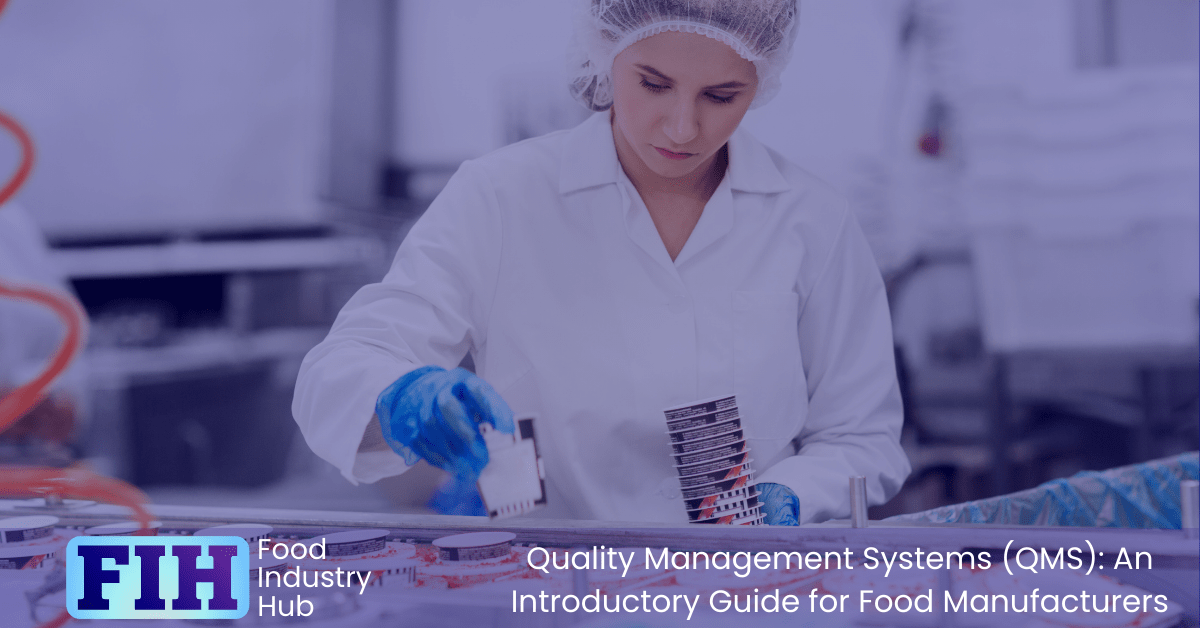
Control of Operations
To effectively manage operations in food manufacturing, it’s crucial to implement a robust control system that ensures quality and consistency throughout the production process.
Control of operations, also known as process control, involves monitoring and controlling each step of the manufacturing process to ensure that it meets the required standards.
This means operating according to process specifications and work instructions/procedures that ensure the production of consistently safe and legal product with the desired quality characteristics, in full compliance with the HACCP or food safety plan.
Labelling and Pack Control
Labelling and pack control measures should ensure that the correct product is packed into the correct packaging and labelled accurately. A majority of recalls are caused by product being packed into the wrong packaging or having an incorrect label applied, which can lead to erroneous product information being presented to consumers – and in particular, inaccurate allergen information.
Labelling and pack control is largely achieved by ensuring that only the labels and packaging applicable to the product currently being packed is available for use in the packing area. Verification checks produce further protection against errors.
Quantity: Weight, Volume and Number Control
Proper control of quantity, including weight, volume, and number, is crucial in maintaining product consistency and ensuring customer satisfaction in the food manufacturing process.
Accurate measurement of product units is essential to prevent underfills or overfills, which can lead to quantity issues and customer complaints.
Implementing effective quantity control measures, such as using calibrated scales and automated filling systems, helps to minimise errors and ensure that products meet the specified weight, volume, or quantity requirements.
Calibration and Control of Measuring and Monitoring Devices
Ensure accurate measurement and monitoring of devices by implementing calibration and control procedures.
Calibration involves comparing the measurements of a device to a known standard to ensure accuracy.
Control procedures, on the other hand, involve regularly checking and adjusting the devices to maintain their accuracy over time, coupled with procedural requirements that ensure only approved and/or certified measuring devices are used, and that their use can be reliably attributed to specific production batches. Every measuring/monitoring device should feature on a register, with accuracy challenges carried out according to a frequency based on risk assessment.
Personnel
When it comes to personnel in food manufacturing, there are several important points to consider.
First, training is crucial for all staff involved in raw material-handling, preparation, processing, packing, and storage areas. This ensures that they’re equipped with the necessary knowledge and skills to handle food safely.
Additionally, personal hygiene practices must be strictly adhered to in these areas to prevent contamination. Medical screening and the use of protective clothing are also essential to maintain a safe and hygienic production environment for both staff and visitors.
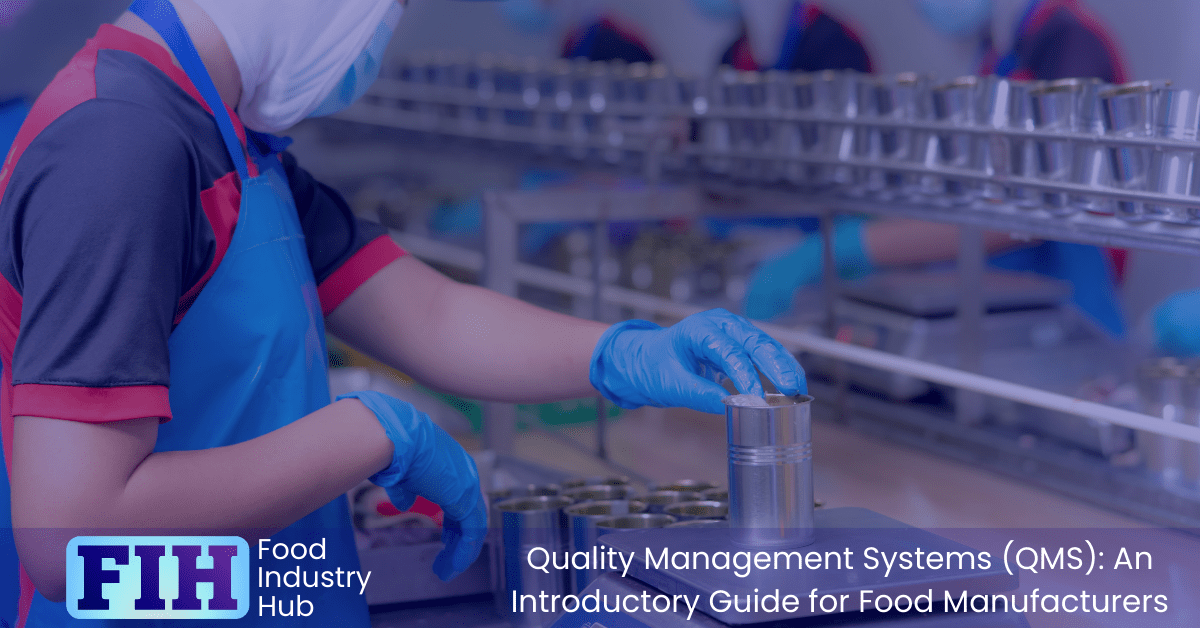
Training Applicable to Raw Material-Handling, Preparation, Processing, Packing and Storage Areas
Training plays a crucial role in equipping personnel with the necessary skills and knowledge for safe and effective handling, preparing, processing, packing, and storing raw materials in food manufacturing.
It ensures that staff understand the proper procedures and safety protocols involved in each step of the process.
Training also lends itself to accountability – staff can only be held responsible fordoing things correctly if they have been adequately trained on what ‘correctly’ is.
Personal Hygiene in Raw Material-Handling, Preparation, Processing, Packing and Storage Areas
Maintaining proper personal hygiene is essential for personnel working in raw material-handling, preparation, processing, packing, and storage areas. It’s important to wash hands thoroughly and regularly, especially before and after handling raw materials or food products.
Additionally, it’s necessary to wear clean and suitable protective clothing, such as hairnets and gloves, to prevent contamination.
Remember that staff should avoid touching their face, hair, or any other part of the body while working to maintain a hygienic environment.
Medical Screening
To ensure the highest standards of personal hygiene, it’s imperative that personnel working in raw material-handling, preparation, processing, packing, and storage areas, to report any communicable diseases and refrain from entering the site if any food poisoning symptoms are apparent.
Visitors to site (including auditors) must also be required to complete a questionnaire to identify any potential risks. This screening helps identify any potential health issues that could compromise the safety and quality of the food being produced. By regularly monitoring your health, the risk of transmitting any diseases or contaminants to the food can be minimised, ensuring the safety of consumers.
Protective Clothing for Staff or Visitors to Production Areas
Wearing appropriate protective clothing is essential for personnel and visitors in production areas to ensure the safety and quality of food manufacturing. This clothing acts as a barrier against potential contaminants, such as dirt, dust, and bacteria that may transferred to food materials from people.
It includes items like hairnets, gloves, masks, and overalls. By wearing these garments, you minimise the risk of cross-contamination and maintain the integrity of the food being produced.
Production Risk Zones
Now let’s talk about the production risk zones in your food manufacturing facility.
Control of these zones includes layout, product flow, and segregation across high-risk, high-care, and ambient high-care areas.
You also need to consider the building fabric, equipment, and maintenance in these zones, as well as staff facilities and housekeeping and hygiene practices.
Ensuring proper management of these areas is crucial to minimise the risk of contamination and maintain the quality standards of your food products.
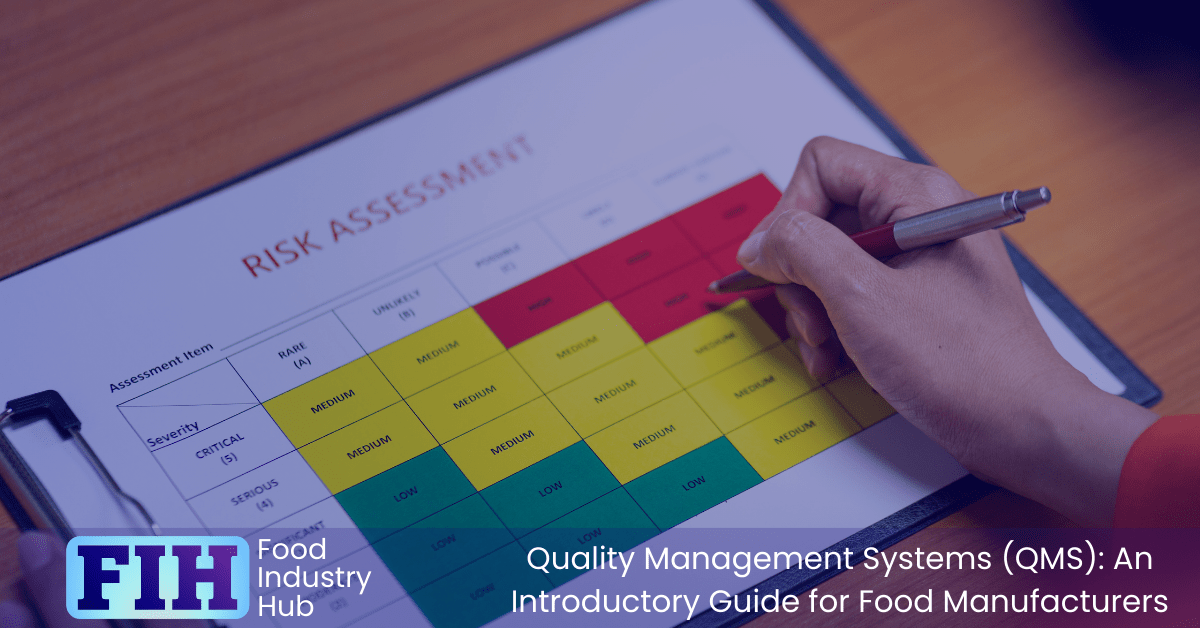
Layout, Product Flow and Segregation in High-Risk, High-Care and Ambient High-Care Zones
Ensure proper layout, product flow, and segregation in high-risk, high-care, and ambient high-care zones to maintain food safety and prevent contamination.
The layout of these zones should be designed to minimise the risk of cross-contamination and ensure efficient movement of products. Product flow should be carefully managed to avoid any mixing of raw materials, intermediate products, and finished goods.
Segregation of different zones is crucial to prevent the transfer of contaminants and maintain the integrity of high-risk and high-care areas.
Building Fabric in High-Risk and High-Care Zones
To effectively manage food safety and prevent contamination, attention must be given to the building fabric in high-risk and high-care zones (production risk zones). The building fabric refers to the materials and structure of the facility, including walls, floors, and ceilings.
These areas should be designed and constructed with materials that are easy to clean and sanitise, minimising the risk of microbial growth and cross-contamination. Additionally, the building fabric should have smooth surfaces and be free from cracks or crevices where bacteria can hide and thrive.
Regular inspections and maintenance are essential to ensure the integrity of the building fabric and uphold food safety standards.
Equipment and Maintenance in High-Risk and High-Care Zones
Regular equipment maintenance is crucial in high-risk and high-care zones (Production Risk Zones) to ensure optimal food safety standards. By regularly inspecting and servicing equipment, you can prevent breakdowns and malfunctions that could lead to contamination or other safety issues.
This includes cleaning and sanitising equipment, checking for wear and tear, and replacing any worn or damaged parts. Consistent maintenance not only improves food safety but also extends the lifespan of your equipment, saving you time and money in the long run.
Staff Facilities for High-Risk and High-Care Zones
When it comes to maintaining optimal food safety standards in high-risk and high-care zones (production risk zones), it’s important to consider the staff facilities provided.
These facilities should be designed to minimise the risk of contamination and ensure the well-being of employees. They should include separate changing areas, locker rooms, and toilets for employees working in different zones.
Additionally, facilities should have proper ventilation, handwashing stations, and designated areas for storing personal items and workwear.
Providing adequate staff facilities is crucial for upholding food safety standards.
Housekeeping and Hygiene in High-Risk and High-Care Zones
Maintaining proper housekeeping and hygiene is essential in high-risk and high-care zones (production risk zones) to ensure food safety standards are upheld. These zones are particularly vulnerable to contamination, making it crucial to implement strict cleaning procedures.
Regular cleaning and sanitisation of equipment, surfaces, and utensils are necessary to prevent the growth and spread of harmful bacteria. Additionally, the proper disposal of waste and the use of appropriate cleaning agents help maintain a safe and hygienic environment for food production.
Waste and Waste Disposal in High-Risk, High-Care Zones
To ensure food safety standards are upheld in high-risk and high-care zones (production risk zones), proper waste disposal practices are essential. This includes implementing effective waste management systems to minimise the risk of contamination and maintain cleanliness.
All waste should be promptly removed from the production area and disposed of in designated waste containers. Regular inspections and audits should be conducted to ensure compliance with waste disposal protocols, preventing any potential hazards and maintaining a safe and hygienic environment.
Protective Clothing in High-Risk and High-Care Zones
Protective clothing is crucial in maintaining a safe and hygienic environment in high-risk and high-care zones (production risk zones). These zones require strict adherence to food safety standards to prevent contamination and ensure consumer safety.
Protective clothing, such as gloves, hairnets, and coveralls, acts as a barrier between workers and the food products, minimising the risk of cross-contamination.
It’s essential to regularly inspect and replace protective clothing to maintain its effectiveness and uphold the highest standards of food safety.
Traded Products
Now let’s talk about the important points regarding Traded Products.
You need to understand the Food Safety Plan, which applies the Hazard Analysis and Critical Control Points (HACCP) to ensure the safety of these products.
Additionally, it’s crucial to monitor and approve the manufacturers and packers of Traded Food Products to ensure their performance meets the required standards.
Moreover, specifications for Traded Products must be established, and regular product inspection and laboratory testing should be conducted to ensure their quality and safety.
Lastly, it’s essential to ensure the legality of the Traded Products to comply with regulations and avoid any potential legal issues.
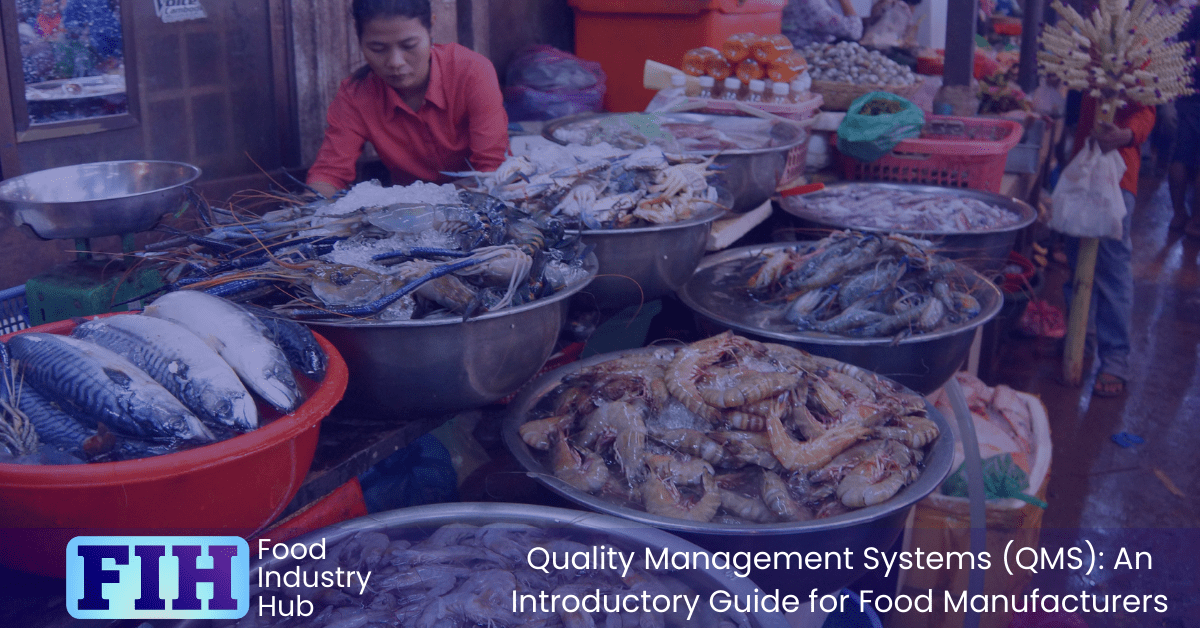
The Food Safety Plan – HACCP Applied to Traded Products
Implementing a food safety plan that applies the Hazard Analysis and Critical Control Points (HACCP) system is crucial for ensuring the safety of traded food products.
This plan involves identifying and evaluating potential hazards, establishing critical control points to monitor and control these hazards, and implementing corrective actions when necessary.
The HACCP plan for traded products should be specific to the processes that apply to traded goods, and at a minimum should address goods receipt, storage, and dispatch.
Approval and Performance Monitoring of Manufacturers/Packers of Traded Food Products
To ensure the safety and quality of traded food products, it’s essential to approve and monitor the performance of manufacturers and packers.
This process involves conducting thorough assessments and evaluations to ensure that manufacturers and packers comply with industry standards and regulations. There should be targeted risk assessment of traded goods, addressing all risks associated with the commercial exchange of food products traded by the company.
Specifications for Traded Products
After approving and monitoring the performance of manufacturers and packers, the next step is to establish specifications for traded products to ensure consistency and compliance with industry standards.
These specifications outline the requirements for various aspects of the product, such as its composition, quality, packaging, labelling, and storage conditions.
By setting these specifications, you can ensure that the traded products meet the necessary standards and are safe for consumption.
Regularly reviewing and updating these specifications is crucial to adapt to changing regulations and consumer demands.
Product Inspection and Laboratory Testing
To ensure the quality and safety of traded products, product inspection and laboratory testing play a critical role in the food manufacturing industry.
These processes involve rigorous checks and analysis of the products at various stages of production, from raw materials to finished goods. There should be a rigorous sampling programme established as a result of risk assessment, intended to identify any non-conforming materials.
Through product inspection, potential issues such as contamination, packaging defects, or incorrect labelling can be identified and rectified.
Laboratory testing, on the other hand, involves analysing samples to ensure compliance with quality standards and regulations, including nutritional content and absence of harmful substances.
Product Legality
Ensuring the legality of traded products is crucial in the food manufacturing industry. It’s important to comply with all relevant laws and regulations to avoid legal issues and protect consumers.
This involves verifying that the ingredients used in your products are legal and safe, as well as ensuring that your labelling and packaging meet the necessary requirements.
Traceability for Traded Products
Traceability for traded products is essential for maintaining transparency and accountability. By implementing effective traceability systems, companies can track the movement of their products throughout the supply chain, from raw materials to the end consumer.
This allows for quick identification and removal of any potentially unsafe or non-compliant products, minimising the risk of foodborne illnesses and ensuring regulatory compliance.
Additionally, traceability enables companies to quickly respond to any issues or recalls, protecting both the consumer and the company’s reputation.
In Summary
So, there you have it! Implementing quality management systems in food manufacturing is crucial for ensuring the safety and quality of the products.
With senior management commitment, a well-designed food safety plan, and a robust management system in place, companies can effectively control product and process quality.
Further Resources
Food Industry Hub serves the food industry with a range of digital resources for the benefit of both commercial food manufacturers and food industry professionals.
For food manufacturers, we offer integrated management systems that give every user a direct interface with your QMS.
For food industry professionals, we provide an extensive signposting service in addition to informational content we hope you’ll find useful as you face new professional challenges. We have very ambitious plans to expand the range of services offered, and currently present informational content on management, safety and quality, and professional success.
